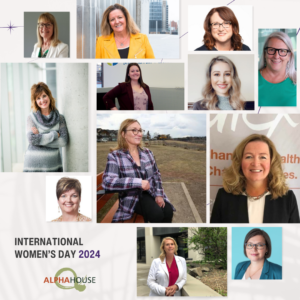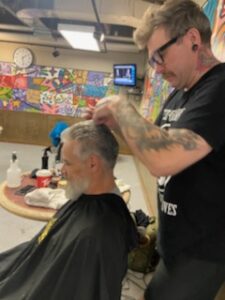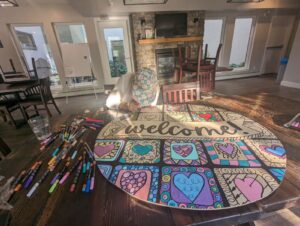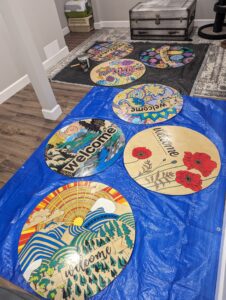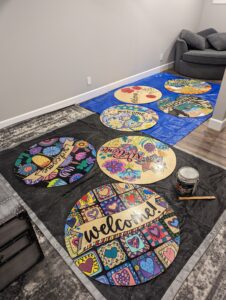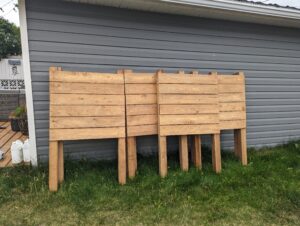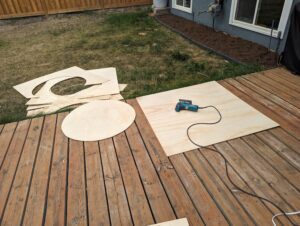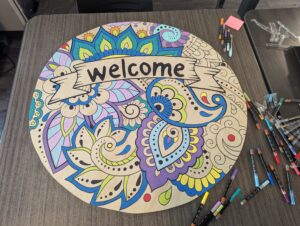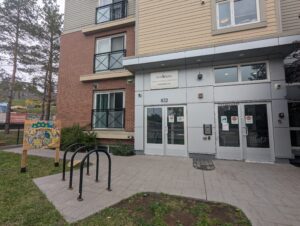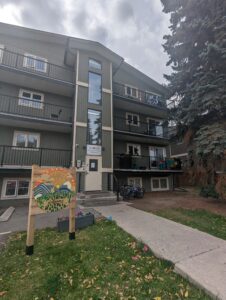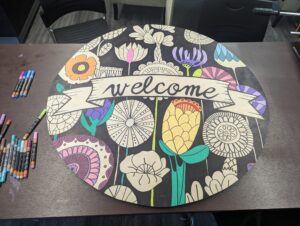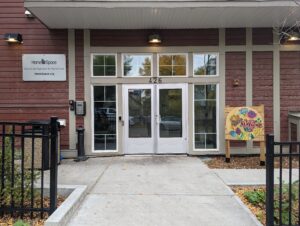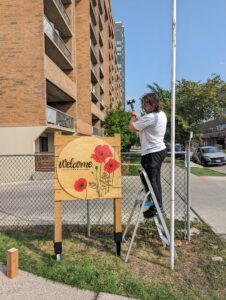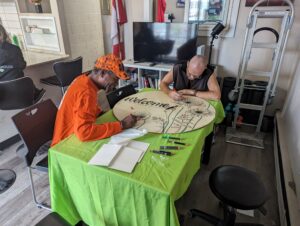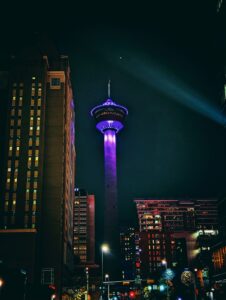Women Leading the Way in the Homeless-Serving Sector
Shaundra Bruvall | March 8, 2024
Women Leading the Way in the Homeless-Serving Sector
International Women’s Day (IWD) is a global celebration of the social, economic, cultural, and political achievements of women. Each year, this day serves as a powerful reminder of the progress made towards gender equality and highlights the work that still needs to be done.[1]
The 2024 theme for International Women’s Day is Inspire Inclusion, which means….well that’s a great question. In today’s blog post, we talk about inspiring inclusion in a variety of different ways including between the for-profit and non-profit sectors, the disparity in income between female and male employees across sectors, and female leadership in Calgary – its exciting developments and the very long distance it still needs to travel – particularly in terms of ethnic and racial diversity.
First and foremost, one of the key pillars of Inspire Inclusion is the promotion of diversity in leadership and decision-making positions.[2] To this day, women – particularly those who belong to other underrepresented groups – continue to face barriers when seeking leadership roles. In the non-profit sector, which employs 285,000 people in Alberta – 78% are women.[3]
Overall, the non-profit sector in Alberta contributes $5.5 billion to our GDP and fills critical needs for the province in areas such as food and basic needs, immigrant settlement supports, senior and childcare supports, sports and recreation, and arts and culture[4]
In the name of inspiring inclusion, we might say there is some room in the public domain for a conversation about how the non-profit sector is often devalued compared to the for-profit sector, in spite of its positive impact on those who live and work in Alberta. In a similar vein, we often see female-dominated industries valued less than their male-dominated counterparts: “male-dominated occupations have traditionally had more respect, higher pay and more fringe benefits.”[5] Also significant is that even though female employees dominate the Alberta nonprofit sector, Statistics Canada shows their annual wages and salaries remain lower than their male coworkers by 14%.[6]
One of the recommendations from The Calgary Chamber of Voluntary Organization’s State of the Sector Report in 2023 was to “identify what success looks like in Diversity, Equity, and Inclusion, as a sector and within our own organizations.”[7]
There is quite a bit of research that talks about women leaders in male-dominated fields because it is typically more newsworthy and interesting to people. But there is less research around female-leaders in female-dominated industries. One of the cool things about the community and social services sector in Calgary is that, unlike many other female-dominated industries, we have many examples of female leadership to celebrate. Alpha House, The Alex, Inn From the Cold, Patricia Jones, Sandra Clarkson, Carlene Donnelly, Distress Centre, Closer to Home, John Howard Society, Discovery House, Calgary Food Bank, HomeSpace, and Sharp Foundation are all examples of female leadership in the community and social services sector in the city. These are women who work everyday towards improving the living conditions and of those experiencing homelessness or facing housing insecurity, those facing domestic violence, individuals and families facing food insecurity, and individuals working to overcome criminal pasts or poverty – to name a few groups positively impacted by the agency leaders we have today.
It is worth celebrating that all of these agencies are led by women. But we also know that alone is not enough. It also does not mean that we have achieved ‘success’ in terms of diversity, equity, or inclusion, particularly when the sector, as CCVO point out in their report, has not yet defined what success looks like in this area.
We know that by providing support and resources, women can be empowered to overcome obstacles and achieve their full potential, but we also know that empowering women to overcome obstacles does not inherently mean there are not still gendered obstacles, and it also is not a silver bullet to ensuring increased and ongoing diversity or inclusion within the agency. But it is a great start and it is something worth celebrating. A 2023 study on leadership from the Leadership Circle Profile, a scientifically validated 360-degree assessment of leadership that measures “Creative Competencies” and “Reactive Tendencies” saw that female leaders demonstrate higher levels of leadership effectiveness and higher levels of Creative competency (in all dimensions) compared to their male counterparts, suggesting women leaders are not only better at building relationships but also that the relationships they build are characterized by authenticity and an awareness of how they contribute to “the greater good beyond the leader’s immediate sphere of influence.”[8]
Given the theme of inspiring inclusion for the 2024 campaign on International Women’s Day is meant to encourage everyone to recognize the unique perspectives and contributions of women from all walks of life, including those from marginalized communities, we wanted to take this time to recognize the women leading our sector today, while acknowledging that there is still much work to do in areas of wages, safety, and marginalization for non-white groups.
[1] https://www.internationalwomensday.com/
[2] https://www.internationalwomensday.com/Missions/20202/What-does-it-mean-to-truly-inspire-inclusion
[3] https://www.calgarycvo.org/facing-the-storm#the-storm-we-face-1
[4] https://www.calgarycvo.org/facing-the-storm#the-storm-we-face-1
[5] https://www.businessnewsdaily.com/10085-male-female-dominated-jobs.html
[6] Statistics Canada, 2021
[7] https://www.calgarycvo.org/facing-the-storm#the-storm-we-face-1
[8] https://www.forbes.com/sites/kevinkruse/2023/03/31/new-research-women-more-effective-than-men-in-all-leadership-measures/?sh=34015792577a
